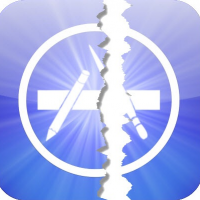How Poor Testing and an Early Release Can Damage Your App and Business

Back in the “Good Ol’ Days” of video game software, when you were forced to aggressively blow into a cartridge to clear the dust and successfully reach the menu screen, bugs had much more permanence. If world 3-2 of Super Mario Bros. had a glitch where you fell through the floor right before the flag, there wasn’t an easy fix that didn’t involved the publisher reissuing the game.
Today, if a new Mario game has a level-breaking bug or just a line of dialogue with a spelling mistake, Nintendo can issue an update that players download and install, and they never have to think of the issue again. In software, mistakes in products released before they’re fully ready aren’t nearly as permanent, but that doesn’t mean that poor testing can’t hurt both the product and the business.
Mobile or PC apps that crash, have poor user experience, don’t run smoothly, or lack features give your customer the idea that whatever they bought didn’t get the tender, loving care it deserved—even if they know the issues can be fixed in a later release.
Bad first impressions can be overcome, but if we’re being honest, how long does a shoddy app stay on your phone’s cluttered screen? Even if you experience problems within the first two or three minutes of owning an app, it’s not uncommon to just uninstall it and look for a better alternative.
Bugs hurt your brand, but according to TechWell CIO and consultant, Mike Sowers, the speed at which the world expects apps to appear in the store makes it difficult to avoid a rocky start.
“People have an expectation, for better or worse these days, that they want software sooner, so they're willing to live with kind of the good enough, and then if we get a process and methodology in place to get it fixed quickly, to enhance it quickly, to add features, functionality, that works,” he explains in an interview with StickyMinds.
It can be a race to the marketplace, but a developer needs to keep in mind that it’s sometimes better to be second if what you’re offering is better tested. Quality is king, and your users will notice if the second, third, or fourth weather app that was released, for example, is better than what’s come before it.
Developers have a need for speed, but that doesn’t mean you can’t slow down when taking turns to avoid hitting walls or scuffing your bumper. Better products lead to greater success, and quality should always be a team-wide effort.
“The trend now is towards team accountability, from an agile perspective. Team accountability for quality and therefore that release decision,” Sowers continues. “We get many more subject matter experts involved. The tester, the developer, the product owner, maybe even the operations team member to make a quality decision.”

